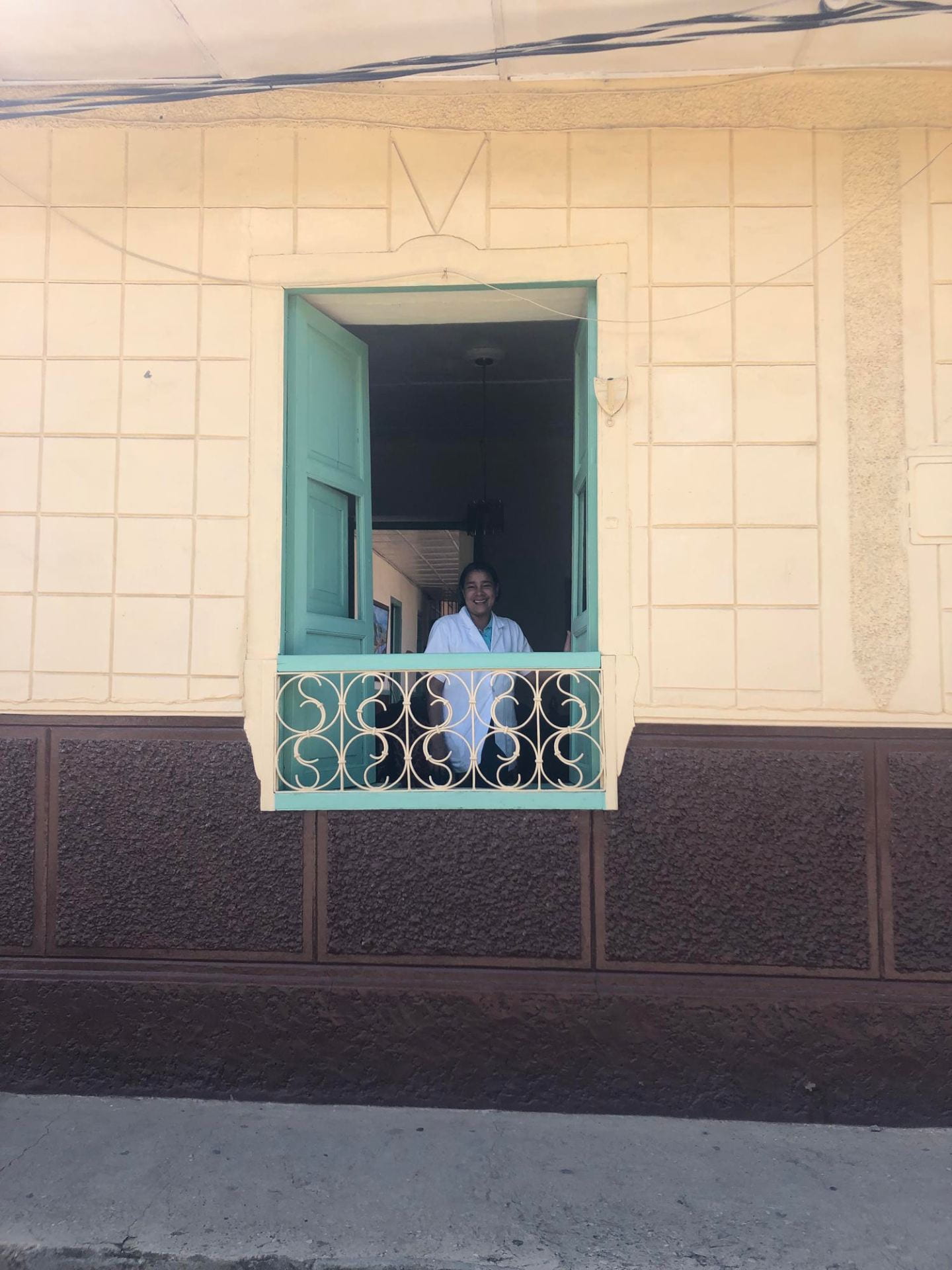Domestic Workers and Retirement
Perpetuating Vulnerability, Uncertainty, and Inequality
That day everyone was either crying or trying to hold back the tears. In the kitchen, Anita Tobon was crying too. Yet, Anita was crying very quietly as if her pain were insignificant or irrelevant. She was crying for the death of her employer of 30 years. Don Enrique Arcila was the closest thing to a father she had. Above all, he was a protector. Now, he was gone and she did not feel “like part of the family, but as only the domestic worker.” In Colombia, Anita is not alone in her dependence on the benevolence of an employer. Domestic work employs the second largest number of women in the country—right after peddling of goods such as lottery tickets and newspapers. In Latin America, according to the International Labour Organization, one out of every four women is employed as a domestic worker.
The sense of safety that Anita experienced, while working for Don Enrique, vanished. Anita—like many other domestic workers—says that she felt insecurity as well as anguish, all of which in her case were intensified by a feeling of guilt. After all, Don Enrique had bought a house for her. In Don Enrique’s eyes that was the best thing he could do to guarantee dignity for Anita in her later years.
Despite this gesture by her employer, Anita had never been formalized by Don Enrique as a domestic worker. In other words, she was always paid in cash and never made contributions to a pension plan. Don Enrique, himself, never made contributions to a pension plan. His retirement plan was composed on the assets that he gathered during a life time of saving. Don Enrique, who lived through a number of violent episodes of Colombia’s bloody conflict, had an inherited mistrust in the government and private institutions, one shared by much of Colombia’s working population.
Even though in Colombia there are two pension plans—one public and one private regime—the country has relatively few workers affiliated to a pension plan. Both pension regimes are based on monthly contributions set according to level of income. Access to benefits depend on the number of weeks worked (1,300 weeks in the public fund and 1,150 in the private fund), plus reaching the age of retirement; 62 years of age for men and 57 years of age for women.
The pension system is full of complexities and exemptions which might contribute to the low levels of affiliation. For example, the public fund has generated concerns since it is sustained by the working population which does not make enough contributions to make the system self-sufficient. Thus, part of the pensions are paid by the government. Only 2.8 million workers out of the total labor force (12.8 million) are contributing to a pension plan. As a result, 25% of the people in retirement age have a pension, and only 5% are women. In this scenario, the commonality is to have individuals—if they have the means—making their own provisions for the later years, instead of affiliating to a pension plan. For those who do not have the means to plan for their later years, like the majority of domestic workers, extreme poverty is a likely scenario.
Despite having a house, Anita—at 55, two years away from the official retirement age for women in Colombia—had no savings and no pension. She will have to work for as long as she can to provide not only for herself, but also for her two unemployed sons and two grandsons. The only governmental benefit that Anita, and other domestic workers- are eligible to get upon reaching retirement age is under Colombia Mayor. Colombia Mayor distributes $75,000 pesos (around US$24) every two months to elders who are living in extreme poverty and do not have a pension plan.
Even without a pension, Anita’s situation is an exception to the general situation of domestic workers in Colombia and beyond who experience exploitative working conditions both because she owns her home and because her employment conditions were relatively good. The last report by the International Labor Organization asserts that, globally, domestic workers remainedas one of the most vulnerable segments of the labor force. Indeed, domestic work is associated more with slavery than to a formal profession that produces value, which gives rise to benefits and a monetary compensation. In fact, many employers are said to see paying domestic workers as an act of generosity and not as a right. Since domestic workers are, in general, invisible in the eyes of the law the propensity for abusing domestic workers is endemic in the profession.
Domestic workers are expected to work longer hours than other workers do. Yet, they are among the workers that earn the lowest wages. In addition, having benefits such as health insurance, maternity leave, overtime payment and pension plans are rarities. It is common to find domestic workers with salaries way below the stipulated minimum wage of a country, and even find that part of their salary is pay in kind. Wage reductions justified based on lodging, food, clothing and even personal favors are common. The matter is that, worldwide, it is frequent to find domestic work as part of the “shadow economy” of a country, than to find domestic work fully protected and regulated by the legislation. In other words, a commonality for domestic workers worldwide is their invisibility in the eyes of the law, rendering them extremely vulnerable.
This problematic exacerbates when taking into account that domestic work not only remains as one of the main professions for women around the world, but it is also increasing. In 1995, there were about 33.2 million domestic workers worldwide. By 2010, this number had risen to a hundred million. In countries like Spain, and Italy the number of domestic workers has doubled. Latin America is not the exception to this trend. In the case of Colombia, according to the official national data gathered by DANE (National Statistics Department) women represent 42 percent of the working population of 21,584,420. In other words, 9,014,698 of women are considered wage laborers. Out of those 9,014,698 working women; 987,525 are domestic workers.
Most of these women will reach retirement age without a pension plan. In essence, in the case of Colombia, having a pension is understood as primarily an individual responsibility with individual consequences, that is, social rights are only available for those individuals that can afford them. When it comes to domestic workers, as well as other workers in the informal economy, it is almost utopic for the government to expect them to constantly contribute to a pension plan when, usually, their salaries are usually below official minimum wages and when the need to cover immediate needs overcomes any expectations to plan for future well-being.
Between 2010 and 2013 only 5.95% of the informal labor force made contributions to a pension plan. It is reasonable to assume that domestic workers were virtually absent from those low contributions. Another fact that adds to the pressing conditions of domestic workers in their later years is the fact that the majority of these women are household heads. In other words, entire families rely on their income. Thus, usually, they do not have financial help from husbands or partners. Additionally, as females, they experienced what the literature calls “the second shift.” Aside from the emotional and physical labor in the house of their employers, domestic workers are also in charge of the physical and emotional labor of their own households. In the absence of a retirement plan, domestic workers are faced with the need to keep working as long as their bodies allow it. In case of sickness, they face situations of instability, vulnerability and eventually the overall deterioration of their living conditions.
Some contend that domestic work is on the decrease, using arguments such as “It has become more expensive to hire a domestic worker; new apartment complexes and houses are designed with no space for a live-in domestic worker; families do not need them anymore, or you do not see as many as before.” Statistics show otherwise, although these common views do indicate changes in the dynamics around domestic work. The number of live-in domestic workers has indeed decreased, but the number of partial (live-out) domestic workers in on the rise. Many middle-class women are entering the labor force, transferring their household responsibilities to women domestic workers. Additionally, the participation of males in household chores has not increased to the point of replacing or equalizing the pivotal role of females in the household, and public caregiving programs are decreasing, making reliance on domestic workers more necessary.
Immigration from neighboring Venezuela is also increasing the supply of domestic workers since this occupation offers the easiest way to enter the labor market in a new society. Becoming a domestic worker does not require formal schooling and the abilities needed are assumed to be intrinsic to be a woman. As Colombia, and Latin America, approach a demographic change in which the elderly population is increasing, the number of women domestic workers reaching the retirement age will also increase. The current system perpetuates the vulnerability, inequality, and uncertainty in the majority of the female labor force– including domestic workers like Anita, who have been relatively well treated. Domestic workers deserve dignity and the right to enjoy peace, stability, and dignity in their elderly years.
Winter 2019, Volume XVIII, Number 2
Gigi Visbal has a research fellowship from the government of Quebec, Canada. She is currently studying domestic workers and other vulnerable populations in the labor market. She is also a recent graduate from the Master in Special Studies at the Harvard School of Education where she took a multidisciplinary approach to study education and vulnerable populations.
Related Articles
Video Interview with Flavia Piovesan
Flavia Piovesan is a member of the Inter-American Commission on Human Rights, Professor of Law at the Pontifical Catholic University of São Paulo and 2018 Lemann Visiting Scholar at the…
Aging: Editor’s Letter
There is no smell of pungent printers ink permeating my office. My interns—Sylvie, Isaac and Marc—are not scrambling to find FedEx boxes to send out ReVista issues to authors and photographers all over the world. I cannot feel the silken touch of the printed page…
A Story of Agricultural Change
Francisca Hernández García, 92, lives in San Miguel del Valle, a town of around 3,000 inhabitants in the Central Valleys of Oaxaca, an hour east of the capital city. She is one of the few remaining…





